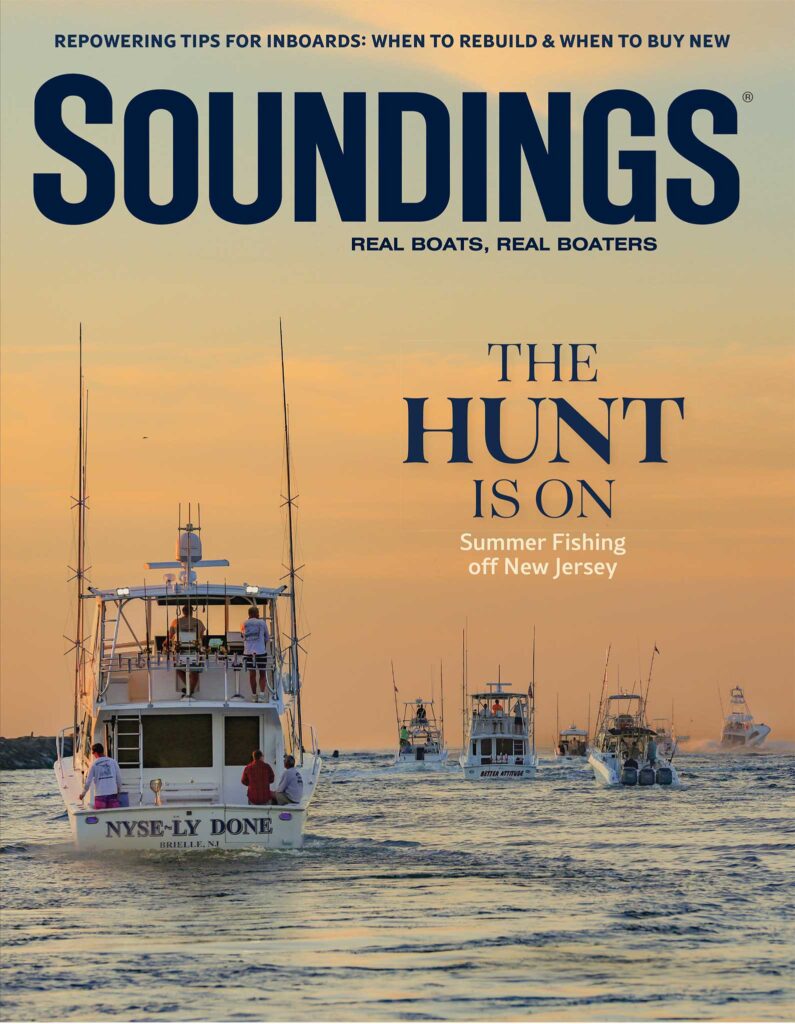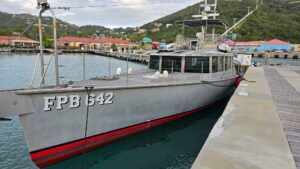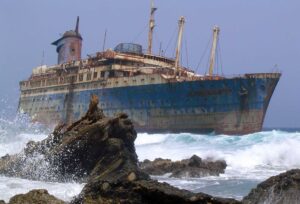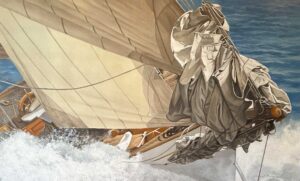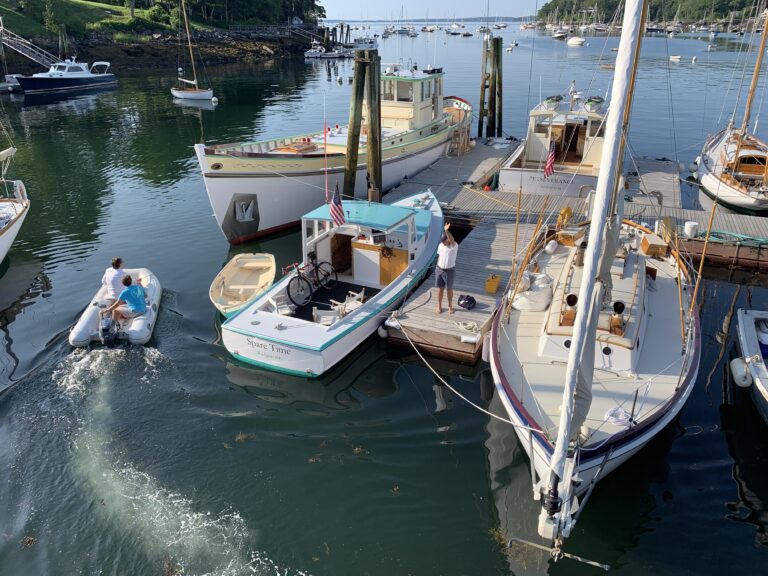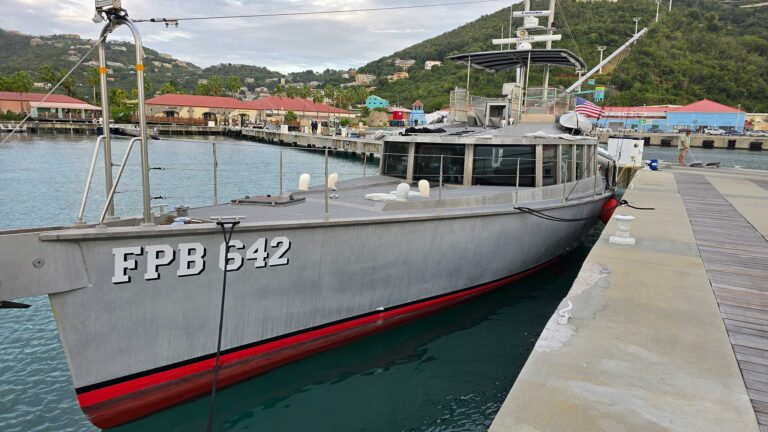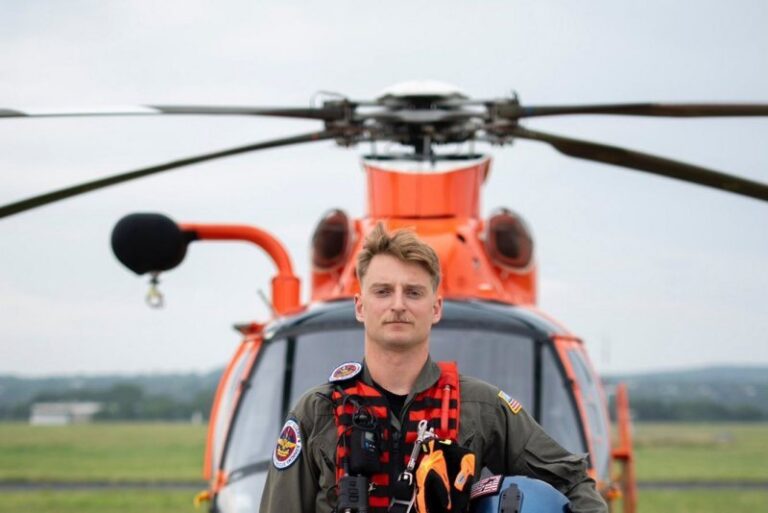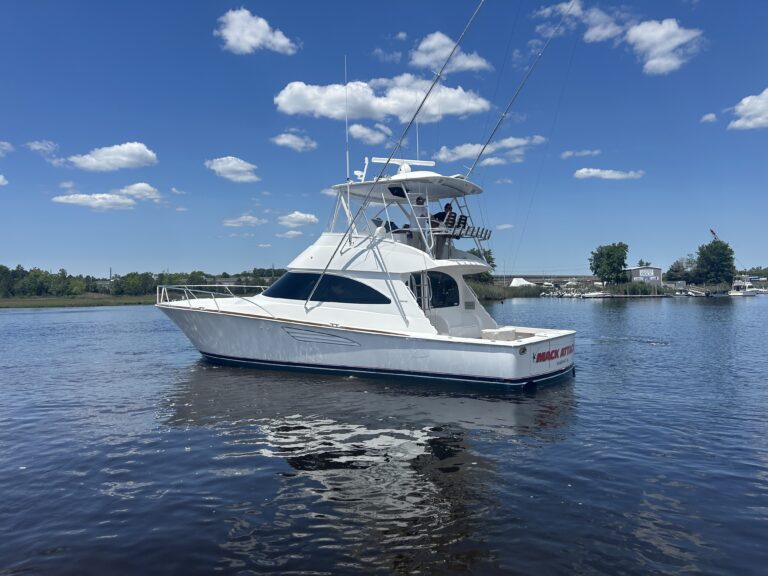Last fall deep-water salvors recovered 15,500 gold and silver coins, 45 gold bars and hundreds of gold nuggets from the wreck of the SS Central America in a treasure hunt that initially struck pay dirt 28 years ago but has been stalled in litigation for decades.

The storied wreck — the ship sank in a hurricane off South Carolina in 1857 with tons of California gold aboard — was still embroiled in a bitter civil court case in Columbus, Ohio, early this year when U.S. marshals flushed out Tommy Thompson, the brains behind the Central America’s discovery, and ended a two-year manhunt for him.
Marshals arrested Thompson, 62, and Alison Louise Antekeier, 45, his girlfriend and assistant, on a federal bench warrant for criminal contempt Jan. 27 at the Hilton Boca Raton Suites in Boca Raton, Florida.
The pair had been hiding out at the extended-stay hotel — paying their bills in cash, eschewing bank accounts and credit cards, placing calls on multiple cellphones, getting around on public transportation and using other strategies to drop out of sight. They had managed to elude marshals since 2012, when a federal district judge in Columbus issued warrants for their arrest after they failed to appear in court to account for the whereabouts of a $250,000 severance trust set aside for Thompson and 500 gold coins — the proceeds from the first excavation of the wreck, in 1989, by a deep-submergence vehicle named Nemo.

In civil cases filed in 2006, two of the original 161 investors and the sonar crew that had helped find the treasure argued that after nearly three decades Thompson owed them a cut of the treasure that had been raised. Those two investors are The Dispatch Printing Co., publisher of the Columbus Dispatch newspaper, which had sunk $1 million into the venture, and the heirs of Donald Fanta, who had invested $250,000.
U.S. appellate Judge Danny J. Boggs, who decided for the crew in a procedural challenge in Cincinnati in 2013, sums up the ongoing dispute this way: Despite the fact that gold and valuables were recovered from the SS Central America, Thompson and his companies never gave the crew any percentage of the recovery. The crew allege Thompson violated his contract with them and owes them a share. Thompson contends that although he found treasure on the wreck, the recovery to date has not been sufficient to cover the costs of raising that treasure, fighting the avalanche of lawsuits that ensued and marketing the gold, and also deliver a return, much less a profit, to any investor.
Loss of the ship

A 280-foot sidewheel steamer, the Central America operated between Panama and New York during the 1850s, before ships could get from California to New York by way of the Panama Canal. She made 43 voyages over four years carrying cargo in the California trade, much of it specie from the gold rush destined for deposit in New York banks. Donald Russell, a U.S. appellate judge in Richmond involved in the salvage award for the Central America, said in a 1992 opinion that the vessel may have carried as much as a third of the gold shipped at the time from California to New York.
The three-masted steamer carried prospectors returning home from the gold fields with their fortunes, along with gold sent by California merchants, bankers and express companies to Eastern banks. Russell said the ship’s manifest showed that it carried $1,219,189 in gold (at 1857 prices), excluding passengers’ personal holdings.
In September 1857, after a stopover in Havana, Cuba, the Central America sailed into a hurricane and began to take on water. After 30 hours, the flooding water overtook the best efforts of the crew and passengers and extinguished the boiler fires. The ship began to sink, but not before her captain, William Lewis Herndon, hailed the brig Marine and transferred 100 passengers off the ship. Fifty more passengers were pulled from the water and brought aboard the Norwegian bark Ellen. Loss of life totaled 425.
In the summer of 1989, Thompson and his crew deployed Nemo from the converted Canadian icebreaker Arctic Discoverer. The 12,000-pound remotely operated vehicle with video cameras and two robotic arms was sent to check out an anomaly that the side-scan sonar team had identified on the bottom in 8,000 feet of water, 160 miles off South Carolina.

When Nemo’s cameras sent back video of a big iron sidewheel, the icebreaker’s control room erupted in elation. Thompson’s team, operating as the Columbus-America Discovery Group and Recovery Limited Partnership, had found one of the richest wrecks in the annals of American maritime history — and a historically noteworthy one, as well.
The discovery was heralded at the time as a triumph of science and technology, and of Tommy Thompson’s vision and perseverance in researching the wreck’s location and developing the technology to find it and undertake an archeologically credible deep-ocean salvage. Even Russell was impressed with Thompson and his team. “We can say without hesitation that their story is a paradigm of American initiative, ingenuity and determination,” the judge’s opinion reads.
David Paul Horan, a Key West, Florida, lawyer who was on Thompson’s legal team during the salvage proceedings in U.S. District Court in Norfolk, Virginia, describes Thompson as a “nice guy” — focused, passionate, confident. “I always liked him. Still do,” he says. “Tommy was extremely intelligent — able to design and build the ROV and come up with a plan to find the wreck. He came in to talk to me even before he started to look for it. That’s how sure he was that they would find it.”
Horan’s slice of the salvors’ pie was half of 1 percent, a sum he has yet to see and doubts he ever will. “I gave up on that years ago,” he says.
Thompson, who had dived on the Atocha wreck for treasure hunter Mel Fisher in Florida after college, was working in the ocean engineering department at Battelle Memorial Institute, an applied science and technology company in Columbus, in the early ’80s when he saw opportunities for applying new sonar and deep-water recovery technologies to finding and raising sunken treasure. He set his sights on the Central America and its golden payload, meticulously researching its whereabouts, developing a probability distribution map and search plan, tapping movers and shakers for $12 million to underwrite the project, and designing and building Nemo.
Nemo brought up 7,708 gold coins and 532 gold bars, numismatist John Kleeberg said in a 2009 monograph for the American Numismatic Society. It was a fabulous haul, but in one investor’s opinion it doomed the salvage to years of litigation that may have been the venture’s undoing. “He made one serious mistake,” says Don Garlikov, of Columbus, who invested about $400,000 in Columbus-America. “He brought up 3 tons of gold instead of 3 pounds.”
‘Paranoid’ and stashing cash
The fabulous find set off a feeding frenzy of litigants asserting an interest in the treasure: 39 insurance companies — some that had paid off claims for the lost gold in 1857, others that were successors of companies that were no longer in business that had paid claims; an heir to the Miller Brewing fortune; a Texas oil millionaire; an Ivy League university; and an order of Catholic monks.
The claimants who had no insurance ties were involved in a 1984 sonar survey of 400 square miles of the Atlantic that identified seven possible targets as the Central America. The team that commissioned the survey abandoned the project and turned the rights to the information over to the monks, who now pressed their claim, although Thompson said that survey was not a factor in finding the wreck.?It wasn’t until 1998 that a judge granted Columbus-America almost 93 percent of the recovered gold; the rest went to the insurance companies. The other claimants got nothing. Columbus-America had been hemorrhaging money — for attorneys’ fees, discovery costs, paying off loans to keep the organization going — while the salvage remained on hold.
As the salvage case wound down, Thompson initially tried to sell the gold through the Christie’s auction house in New York. Those efforts failed and resulted in another lawsuit. He signed a marketing agreement in 1999 with California Gold Marketing Group on behalf of Recovery Limited and Columbus-America, but by this time some of the investors and his sonar crew were growing restive about not receiving their share of the treasure.

In a March 2000 letter to investors, Thompson attorney Richard Robol reported that retail sales of the gold were “robust,” but “to date, there has been no net profit to Columbus-America. The Group is very hopeful that profits may be obtained within the next six to 12 months, as sales progress.”
Those profits never materialized. A 2011 article in the Columbus Dispatch said Thompson sold the gold to the California marketing company for $52 million. A 1999 article in the Columbus Monthly said the company had run up bills — mainly interest charges and legal expenses — of $57 million as of that date. That suggests a loss of at least $5 million, which along with ongoing litigation scared off new investors who could have jump-started the salvage operation.
That doesn’t surprise nautical archeologist Filipe Castro of Texas A&M University. A sharp critic of treasure hunting, he says it “destroys something that belongs to everybody. … Tommy Thompson is just another sad story, like so many others. I have never heard a story of anybody that invested in treasure hunting [making] money.”
Another salvo of litigious fire came in 2005 and 2006, when Thompson’s sonar crew filed suit against him, Columbus Exploration — the latest iteration of Recovery Limited — and all of the Thompson companies, demanding their share of the gold.
Meanwhile, The Dispatch Printing Co. began demanding an accounting of all revenue and expenses, which Thompson had not provided as he became more reclusive and, in one judge’s words, “paranoid.” Thompson had so centralized control of the companies in his hands that he had not convened his board in years.
On Aug. 13, 2012, Thompson failed to appear before U.S. District Judge Edmund A. Sargus Jr. in Columbus to show why he shouldn’t be held in contempt for failing to account for the whereabouts of the $250,000 severance trust and the 500 gold coins, as ordered by the court to hold as security to satisfy the sonar crews’ demands for their share of the salvage. Shortly after that, the judge issued a warrant for Thompson’s arrest, and later a warrant for the arrest of Antekeier, his assistant.
The pair had been living in a mansion known as Gracewood in Vero Beach, Florida, since 2004, sending instructions to Thompson’s attorneys, who were orchestrating his responses to the lawsuits filed against him and his companies, according to Vance Brinkerhoff, the real estate agent who rented the estate to them. “I knew everything about him before he moved in,” Brinkerhoff says.
They had been undergraduates together at Hartwick College in upstate New York, were members of the same fraternity and had mutual friends. When Thompson came to him looking for a secluded getaway, Brinkerhoff showed him Gracewood. Thompson liked it but required Brinkerhoff to make accommodations. The utilities had to be in the agent’s name; Thompson said this was for security because of threats on his life linked to the litigation. And Thompson always paid his rent in cash.
Brinkerhoff says he suspected that Thompson kept large amounts of cash hidden on the premises because the money always smelled of mold. Whatever the reasons for stashing the money, Brinkerhoff says he was confident that when the court cases were resolved, Thompson would get his cut of the salvage and Brinkerhoff could cash in by selling his client a South Florida mansion.
End of the adventure
By September 2012, Thompson had fallen three months behind on his rent. Brinkerhoff sent his handyman, James Kennedy, to collect it, but no one was home, which was unusual. Wondering what was going on, Brinkerhoff searched the Internet for Thompson and discovered that he was a wanted man.
Brinkerhoff says he contacted authorities. Meanwhile, Kennedy let himself into the house, reporting later in court depositions that he had found the book How to be Invisible, which provided tips for dropping out of sight of law enforcement; money straps for binding $10,000 in $100 bills; and pipes that could be buried with cash stuffed inside. “The book also indicated that burying cash is a good way to secretly store it,” U.S. Marshal Mark Stroh wrote in an affidavit after the couple’s arrest.

Kennedy also found hundreds of microcassette recordings of conversations with lawyers and others, most of them related to the court cases; Post-It notes covering walls with the times and dates of hearings; bound binders of legal timelines; 12 active cellphones; and a bank statement in the name of Harvey Thompson (a known alias of Thomas Thompson) in the amount of $1 million.
Their hideaway discovered, Thompson and Antekeier went deeper underground, although Thompson, through a lawyer, subsequently caught up on his rent, presumably with the intention of eventually returning. Two years later, based on a tip from federal agents in Ohio, U.S. marshals in Florida focused on Antekeier, Barry Golden, of the U.S. Marshals Service in Miami, told reporters.
Agents spotted Antekeier in Palm Beach County and tailed her for seven hours as she switched from buses to taxis to move about, presumably to shake anyone who might be tailing her. She led agents to the Hilton Hotel in suburban Boca Raton, and on Jan. 27 this year marshals arrested the two and seized $420,000 in cash, according to court records.
It was an ignominious end to an adventure that had held such promise nearly three decades earlier. On Jan. 9, 2014, Franklin County, Ohio, Judge Patrick Sheeran appointed Columbus businessman Ira O. Kane as receiver for Thompson’s companies, Recovery Limited Partnership and Columbus Exploration, describing their condition as “one of great disarray and insolvency, coupled with a lack of functional management.”
Sheeran directed Kane to press ahead with salvage operations that had been in abeyance for 28 years. The Dispatch Printing Co. extended the reconstituted company an interest-free $500,000 loan to get started. Kane chose Odyssey Marine Exploration, of Tampa, Florida, to undertake the operation with its 251-foot ship Odyssey Explorer and ROV Zeus. So far, Odyssey has raised 15,500 silver and gold coins, 45 gold bars, and hundreds of gold nuggets, dust and jewelry, the salvors say.
Investor Garlikov, who at this point expects little or no return on his $400,000, remains sympathetic to Thompson. “His heart is in the right place,” Garlikov says. “He was operating on a shoestring and trying to protect everybody’s interests.”
Another Columbus investor, Bradley Kastan, says raising the treasure was a great American success story. “It’s been really exciting and disappointing at the same time,” he says.
Kastan knew investing in a hunt for a 150-year-old treasure would be risky. “Even a slight return will be a real victory,” he says. “I feel very good about what we’ve accomplished, what we’ve learned. It was an adventure.”
May 2015 issue

